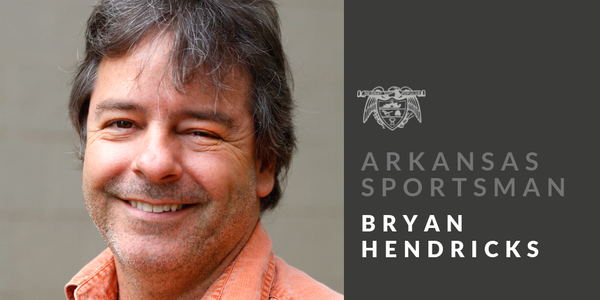Because all things in the outdoors are connected, let’s revisit an old story that’s new again about bald eagles mysteriously dying in Southwest Arkansas.
In 1996, the Arkansas Game and Fish Commission and U.S. Fish and Wildlife Service were mystified at the deaths of 29 bald eagles at DeGray Lake.
Necropsies revealed that the eagles all suffered from an undiagnosed ailment that dramatically deteriorated their brains. Eventually, the problem departed the public consciousness. Did eagles just as mysteriously stop dying, or did the media abandon the story?
The mystery was finally solved early in 2021. There are many articles about it, but we focus on one written by Sarah Zhang in the March 25 edition of The Atlantic.
As late as 2001, the only solid clue available to researchers was that coots at DeGray Lake experienced the same symptoms. They were uncoordinated and clumsy. Some couldn’t fly. Sick coots were easy pickings for bald eagles, which in turn got sick after eating the coots. In this fashion, it appears similar to a person suffering neurological damage after eating beef infected with mad cow disease, but that was not the case.
Coots were eating hydrilla verticillata, an exotic aquatic grass that was common at lakes DeGray, Ouachita and others in this part of the country. Susan Wilde, aquatic scientist at the University of Georgia, said that the hydrilla was infected with an undiscovered form of cyanobacteria, or blue-green algae. Experiments in 2001 revealed that ducks and chickens that were fed infected hydrilla developed brain lesions similar to those in the dead coots and eagles.
Researchers cultivated cyanobacteria in a laboratory. They fed it to ducks and chickens, but they didn’t get sick. Only wild-grown hydrilla sickened fowls and eagles. Bromine was the key ingredient, but southeastern lakes contain very low concentrations of bromine. Hydrilla sequesters bromine to concentrations up to 300 times greater than amounts in the water.
Researchers speculated that bromine could have come from coal-fired power plants that use bromine to filter out mercury or from herbicides used to control hydrilla.
In 2007, the Army Corps of Engineers introduced the Pakistani fly to DeGray Lake to control hydrilla. I attended the meeting at the DeGray Lake Project Office with John Benjamin, then a member of the Arkansas Game and Fish Commission. The “Pak fly,” as it became known, is a sterile larva that eats the tops of hydrilla sprigs and tendrils, preventing them from growing to the water surface.
The Arkansas Game and Fish Commission also stocked grass carp, which consume hydrilla but do not reproduce.
The primary reason for these steps, we were told at the time, was to remove hydrilla from the lake surface because it interfered with boating, skiing, swimming and other water recreation. Hydrilla also reduced the lake’s water holding capacity because water and live plants cannot occupy the same space.
At no time was hydrilla ever mentioned in association with eagle deaths, but The Atlantic article suggests it was the primary reason. If eagles were part of the decision-making process, the Corps and the Commission should have shared that with the public.
Why? Hydrilla is outstanding habitat for largemouth bass. In the 1990s and early 2000s, lakes DeGray and Ouachita were top-notch bass fishing destinations, largely because of hydrilla.
Introducing the Pak fly and grass carp just happened to coincide with the arrival of an epic drought that, as I recall, reduced Lake Winona to a record low level. Together, these factors wiped out all of the hydrilla at DeGray. Bass anglers have been moaning about it ever since and have excoriated the commission ceaselessly. Had they known about the link between hydrilla and eagle mortality, they might have been a little more understanding.
Once again, hydrilla has commanded a foothold at DeGray, and it is slowly coming back at Lake Ouachita. If it ever re-establishes its concentrations of the late 1990s and early 2000s, it is reasonable to assume that it will eventually sequester large enough concentrations of bromine to again produce sufficient amounts of cyanobacteria to kill coots. Eagles will, of course, eat sick coots and become sick as well, regenerating the whole sorry cycle.
This leads us to wonder if the Corps of Engineers and Game and Fish Commission will reapply the Pak fly/grass carp elixir. If it doesn’t coincide with another epic drought, perhaps it will produce results that will satisfy all of the partners that have a vested interest in the lake.
Knowing what we know, we will pay closer attention going forward.
Credit: Source link































